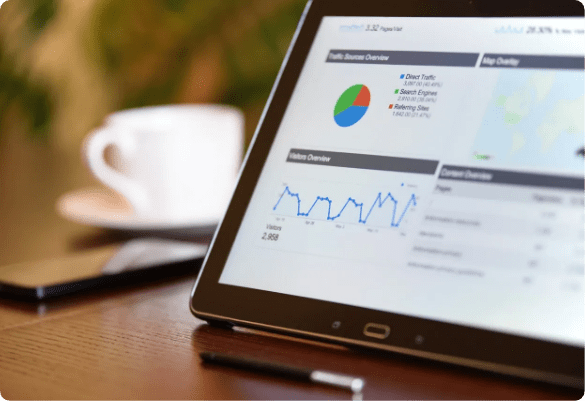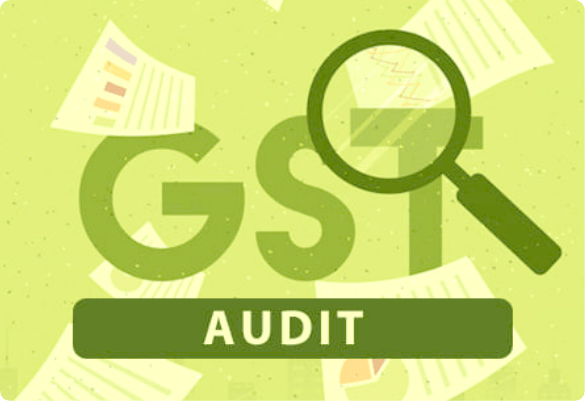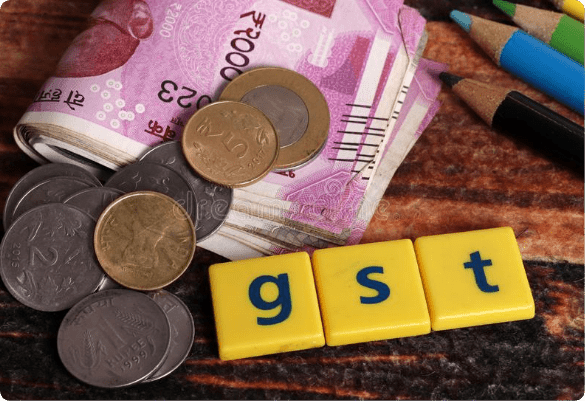CBIC has recently notified the taxpayers via Notification No. 01/2022- Central Tax on 24th February 2022, that the businesses whose aggregate turnover exceeds Rs. 20 Crore are now required to generate e-Invoices for all their B2B invoices.
This means, many new small businesses will now be entering the e-Invoicing system from 1st April 2022. Hence, these small businesses are required to equip themselves with the information regarding e-Invoice generation.
In this comprehensive article, we will be discussing the e-Invoice generation in short and also look at some of the best ways to quickly generate e-Invoices without any hassle.
E-Invoicing under GST. Explained in brief
Before diving into the process of e-invoice generation, it is important to understand what is e-Invoicing under GST and why is it essential for your business.
In this section, we will explain the most important facts related to e-Invoicing under GST in a simple way.
What is e-Invoicing under GST?
- Businesses must understand that, e-Invoicing does not mean creation of a new invoice.
- E-Invoicing simply means ‘REPORTING’ & ‘AUTHENTICATING’ of your already existing/generated B2B invoices to the government side.
- An eligible taxpayer has to report his existing B2B invoices to the Government through a common portal called as Invoice Registration Portal (IRP).
E-Invoicing Applicability
E-Invoicing update – February 2022
The CBIC has issued Notification No. 01/2022- Central Tax, on 24th February 2022 that has notified the taxpayers about the revised eligibility for generating E-Invoicing under GST.
W.e.f 1st April 2022, taxpayers whose annual aggregate turnover is GREATER than Rs. 20 Crore will be eligible to generate E-Invoices for all their B2B invoices.
So if your annual aggregate turnover is greater than Rs 20 Crore then you will have to generate e-Invoices corresponding to all your B2B invoices.
Following are some of the businesses that are EXEMPTED from generating E-Invoices under GST-
- Goods Transportation Agency
- Insurance companies
- Special Economic Zone (SEZ) units
- Banking institutions
- Non-Banking Financial Companies (NBFCs)
E-Invoice Generation Process in short
In this section, we have explained the E-Invoice generation process in brief. Eligible businesses can generate E-Invoices directly from the Invoice Registration Portal (IRP).
Following are the simple steps to follow to generate e-Invoices on the IRP portal:
Step 1: Generation of B2B Invoice on ERP/ Billing software
- Taxpayer has to generate invoice on his ERP system or Billing software.
- This invoice should capture all the mandatory & optional fields as per the E-Invoice Schema specified by the government.
Step 2: Generating JSON file format for this invoice
- In the E-Invoicing system, the taxpayer is required to upload the JSON file on the IRP portal.
- Taxpayers should generate the JSON file for the invoice created on the ERP system.
Step 3: Uploading JSON file on the IRP portal
- The JSON file should now be uploaded on the Invoice Registration Portal (IRP).
Step 4: Validation of uploaded data by IRP portal
IRP validates the JSON file uploaded by the taxpayer on the IRP portal. IRP shall check this data from the Central registry of the GST Network (GSTN) & validates the invoice for the following four validation checks:
- Customer’s GSTN
- Invoice number
- Type of Document
- Financial Year
Now every invoice shall be assigned a unique Invoice Reference Number (IRN).
Step 5: Invoice Reference Number generation on IRP
IRP assign a unique IRN for every invoice uploaded on the IRP portal. Along with the IRN, IRP will also append a QR code on the newly generated e-Invoice. Invoice Reference Number is a 64 character long unique number.
There are two options available to generate the IRN: Offline utility mode and API Integration mode.
Step 6: QR code generation on the IRP
The IRP portal shall now digitally sign the e-Invoice and the QR code (quick response code). Will be appended on the E-Invoice. This QR code holds the essential details of the Invoice. QR code will facilitate faster validation of the e-Invoice for the future instances.
The details captured in the QR code on the e-Invoice are as follows:
- Unique Invoice Reference Number
- GSTIN of the supplier
- GSTIN of the recipient
- Invoice number provided by the supplier
- Invoice generation date
- Invoice value (taxable value & tax amount)
- HSN codes of items having highest taxable value
Step 7: Generated E-Invoice is now ready
After assigning a unique IRN and QR code to the e-Invoice, the e-Invoice is digitally signed by the IRP portal.
If the taxpayer is generating e-Invoice from his ERP system using the API Integration, then the taxpayer can easily download the newly generated e-Invoice on their ERP system itself.
e-Invoice generation solution like KYSS you generate e-Invoices in bulk so that you don’t even need to visit the IRP portal.
If the taxpayer is generating e-Invoice on the IRP portal directly, then the businesses shall get the newly generated e-Invoice on their registered Email id.
E-Invoicing Schema Explained
An e-Invoice contains both MANDATORY a well as OPTIONAL fields.
In this section we have answered, what are the mandatory fields on an e-Invoice
Following are the 30 Mandatory fields in the E-Invoicing Schema:
|
Sr. No. |
Mandatory Field Title |
Description |
| 1 | Document Type Code | Enumerated List such as INV/CRN/DBN |
| 2 | Supplier Legal Name | String Max length: 100 |
| 3 | Supplier GSTIN | Max length: 15 Must be alphanumeric |
| 4 | Supplier Address | Max length: 100 |
| 5 | Supplier Place | Max length: 50 |
| 6 | Supplier State Code | Enumerated List of states |
| 7 | Supplier Pin code | Six digit code |
| 8 | Document Number | Max length: 16 Sample can be “ Sa/1/2019” |
| 9 | Preceding Invoice Reference and date | Max length:16 Sample input is “ Sa/1/2019” and “16/11/2020” |
| 10 | Document Date | String (DD/MM/YYYY) as per the technical field specification |
| 11 | Recipient Legal Name | Max length: 100 |
| 12 | Recipient’s GSTIN | Max length: 15 |
| 13 | Recipient’s Address | Max length: 100 |
| 14 | Recipient’s State Code | Enumerated List |
| 15 | Place Of Supply State Code | Enumerated List of states |
| 16 | Pin code | Six digit code |
| 17 | Recipient Place | Max length: 100 |
| 18 | IRN- Invoice Reference Number | Max length: 64 Sample is ‘a5c12dca8 0e7433217…ba4013 750f2046f229’ |
| 19 | Shipping To GSTIN | Max length: 15 |
| 20 | Shipping To State, Pin code and State code | Max length: 100 for state, 6 digit pin code and enumerated List for code |
| 21 | Dispatch From Name, Address, Place and Pin code | Max length: 100 each and 6 digits for pin code |
| 22 | Is Service | String (Length: 1) by selecting Y/N |
| 23 | Supply Type Code | Enumerated List of codes Sample values can be either of B2B/B2C/ SEZWP/S EZWOP/E XP WP/EXP WOP/DE XP |
| 24 | Item Description | Max length: 300 The sample value is ‘Mobile’ The schema document refers to this as the ‘identification scheme identifier of the Item classification identifier’ |
| 25 | HSN Code | Max length: 8 |
| 26 | Item Price | Decimal (12,3) Sample value is ‘50’ |
| 27 | Assessable Value | Decimal (13,2) Sample value is ‘5000’ |
| 28 | GST Rate | Decimal (3,2) Sample value is ‘5’ |
| 29 | IGST Value, CGST Value and SGST Value Separately | Decimal (11,2) Sample value is ‘650.00’ |
| 30 | Total Invoice Value | Decimal (11,2) |
When a business has lesser number of invoices, it is okay to perform e-Invoice generation, manually. However there is a still chance of error introduction in your e-Invoice generation process.
But when a business has a large number of invoices to be reported to the government, it is NOT feasible to do this activity manually.
Using an automated e-Invoicing solution like KYSS will ensure that there is no error introduced in the e-Invoice and your business saves a lot of clerical hours and efforts.
Why is accurate e-Invoice generation essential?
E-Invoicing under GST is a clear step taken towards the curbing of ill-practices like tax evasion & claiming of ineligible ITC based in fake invoices. E-Invoicing has helped to eliminate these problems to a good extent. Once the invoice is validated from the government’s side, the e-Invoice then carries an authentic value and thus needs no further scrutiny. This creates a trust amongst the recipients receiving the e-Invoice because of the government’s side authentication.
Key benefits of E-Invoicing for MSMEs include:
- Auto-population of data
When an e-Invoice is generated, it will be used for auto-population while GSTR-1 filing.
The e-Invoice details will also be auto-fetched while E-Way Bill generation.
This helps the re-uploading of the same data while GSTR-1 filing & e-Invoice generation. - Counterfeit invoices will be eliminated
As the invoices are reported to the IRP portal for authentication, furnishing incorrect or fake detail can have very severe consequences. Hence, it is very difficult to validate fake invoices from the IRP portal due to the validation checks done on the IRP portal. E-Invoicing system will allow to keep a complete trail of the B2B invoices with the government which will help in minimizing tax frauds. - Small businesses can now deal with larger businesses
E-Invoicing will provide a transparent mechanism for billing. This will enable the smaller businesses in Tier 2 & 3 cities to deal with large businesses. This will widen the scope of business for the smaller businesses.
E-Invoicing under GST preparations for small businesses
The steps of the government are towards making e-Invoicing mandatory for all the businesses.
Businesses must take care of the following things:
- Businesses should keep up with the changing reporting requirements in the GST laws.
- Businesses must opt for an automated e-Invoice generation solution like KYSS that allows bulk e-Invoice generation.
- Stay compliant with the GST laws for all the time.
It is essential that the businesses should be ready with an e-Invoicing solution like KYSS that allows:
- Bulk e-Invoice generation
- Storage of e-Invoices for very long time (Because IRP portal stores the e-Invoice for only 24 hours from the date of generation)
- Automates data preparation to avoid errors, etc.
From 1st April 2022, many new businesses will be entering the E-Invoicing system. Most of these businesses are going to be small and medium sized enterprises. These businesses should note that automating your e-Invoice generation process will help you save your time and efforts.
Generating clean and accurate e-Invoices is required as this data will be reused for the GSTR-1 preparation as well as E-Way Bill generation. Hence, businesses that will be entering E-Invoicing system from 1st April 2022, should get their infrastructure up and running.






